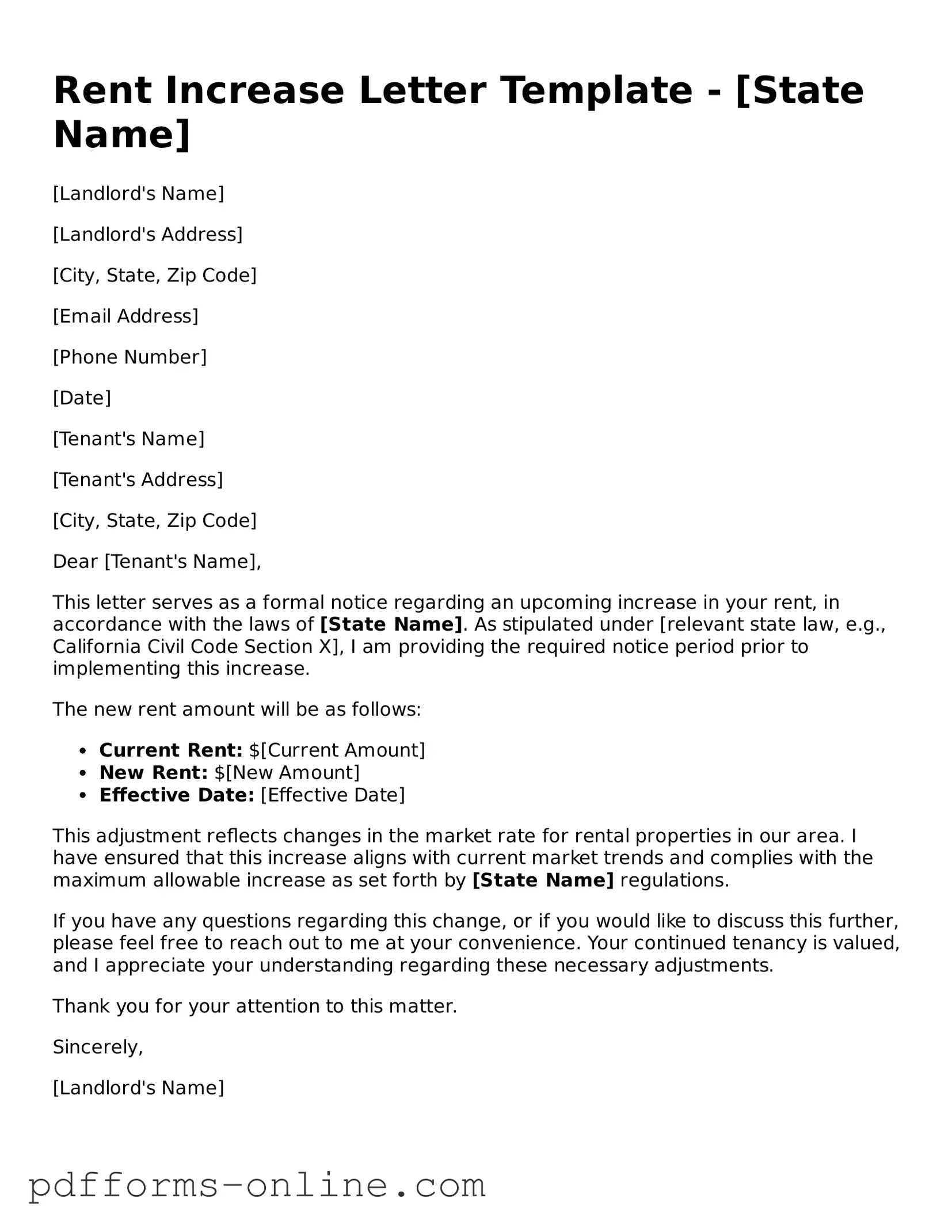The Rent Increase Letter is similar to the Notice to Quit. Both documents serve as formal communications between landlords and tenants, but they address different issues. While the Rent Increase Letter informs tenants of a change in rental terms, the Notice to Quit is a notification to vacate the premises. Each document must comply with specific legal requirements, such as delivery methods and notice periods, ensuring that both parties are aware of their rights and responsibilities.
Another related document is the Lease Renewal Notice. This notice is sent to tenants when a lease is nearing its expiration. Like the Rent Increase Letter, it outlines changes in terms, including potential rent adjustments. Both documents aim to clarify expectations and facilitate communication between landlords and tenants, fostering a smoother transition into new rental terms or lease agreements.
The Rent Payment Reminder also shares similarities with the Rent Increase Letter. While the Rent Increase Letter notifies tenants of a change in rent, the Rent Payment Reminder serves as a prompt for tenants to make their payments on time. Both documents are crucial for maintaining clear communication and ensuring that tenants are aware of their financial obligations related to their rental agreements.
The Security Deposit Return Letter is another document that aligns with the Rent Increase Letter in terms of formal communication. This letter is sent to tenants when their lease ends, detailing the return of their security deposit. Like the Rent Increase Letter, it must include specific information and adhere to state regulations, ensuring that tenants understand the financial aspects of their tenancy.
The Eviction Notice is also akin to the Rent Increase Letter, as both are formal notices from landlords to tenants. However, the Eviction Notice indicates a more severe action, often due to non-payment or lease violations. Both documents require careful wording and adherence to legal timelines, highlighting the importance of clear communication in landlord-tenant relationships.
The Rent Agreement Amendment is similar to the Rent Increase Letter in that it modifies existing rental terms. This document can outline changes in rent or other lease conditions, requiring mutual consent from both parties. Like the Rent Increase Letter, it ensures that all modifications are documented and legally binding, protecting the interests of both landlords and tenants.
In Texas, understanding the various legal documents involved in rental agreements is crucial for both tenants and landlords. Each document, from the Notice to Quit to the Lease Termination Notice, serves a distinct purpose in managing the rental relationship. To ensure compliance and protect your rights, make sure to familiarize yourself with the appropriate forms, including the Texas Lease Agreement, which can be accessed through All Texas Forms, offering a comprehensive resource for all your leasing needs.
The Tenant Complaint Letter can also be compared to the Rent Increase Letter. While the latter addresses changes initiated by the landlord, the Tenant Complaint Letter allows tenants to formally express concerns about their living conditions or lease terms. Both documents play a crucial role in maintaining open lines of communication, helping to resolve issues before they escalate.
Finally, the Rent Adjustment Notice is closely related to the Rent Increase Letter. This notice informs tenants of any adjustments to their rent, whether an increase or decrease. Both documents require clear communication of the new rental terms and adherence to local laws, ensuring that tenants are fully informed about changes that affect their housing costs.
